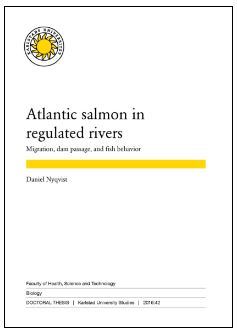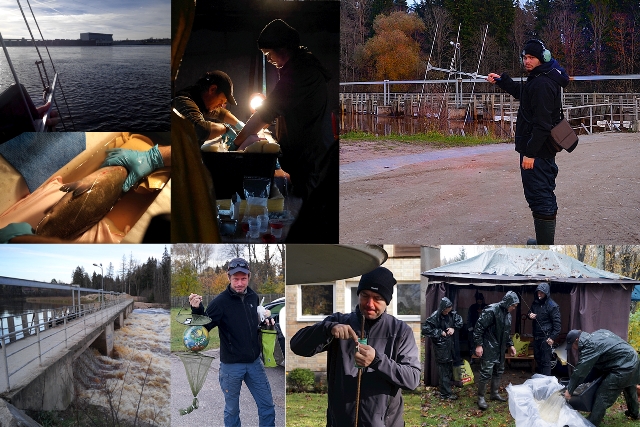Atlantic salmon in regulated rivers: Migration, dam passage, and fish behavior
Posted by Daniel Nyqvist | Nyheter, Projekt Klarälven Last Friday, I, Daniel Nyqvist, successfully defended my PhD-thesis “Atlantic salmon in regulated rivers – Migration, dam passage, and fish behavior” at Karlstad University. Scott Hinch (University of British Columbia, Canada) was opponent and Eva Thorstad (NINA, Norway), Kim Aarestrup (DTU AQUA, Denmark) and Hans Lundqvist (Swedish University of Agriculture) constituted the grading committee (betygskommitté). The short abstract of the thesis reads:
Last Friday, I, Daniel Nyqvist, successfully defended my PhD-thesis “Atlantic salmon in regulated rivers – Migration, dam passage, and fish behavior” at Karlstad University. Scott Hinch (University of British Columbia, Canada) was opponent and Eva Thorstad (NINA, Norway), Kim Aarestrup (DTU AQUA, Denmark) and Hans Lundqvist (Swedish University of Agriculture) constituted the grading committee (betygskommitté). The short abstract of the thesis reads:
“Hydropower dams block migration routes, thereby posing a threat to migratory fish species. Fishways and other fish passage solutions may aid fish to pass hydropower dams. A functional fish passage solution, however, must ensure safe and timely passage for a substantial portion of the migrating fish. In this thesis, I focus on downstream passage and evaluate the behavior and survival of migrating Atlantic salmon in relation to dams in systems with (1) no fish passage solutions (2) simple passage solutions (3) best available passage solutions. In addition, I studied the survival and behavior of post-spawners and hatchery-released smolts.
A large portion of the spawners survived spawning and initiated downstream migration. For hatchery-reared smolts, early release was associated with faster initiation of migration and higher survival compared to late release. Multiple dam passage resulted in high mortality, and high spill levels were linked to high survival and short delay for downstream migrating salmon. For smolts, dam passage, even with simple passage solutions, was associated with substantial delay and mortality. Rapid passage of a large portion of the migrating adult salmon was achieved using best available passage solutions.”
The frame of the thesis is available here. Already published papers included in the thesis are Post-Spawning Survival and Downstream Passage of Landlocked Atlantic Salmon (Salmo salar) in a Regulated River: Is There Potential for Repeat Spawning? (in River Research and Applications) and Migratory delay leads to reduced passage success of Atlantic salmon smolts at a hydroelectric dam (in Ecology of Freshwater Fish). For full access to the thesis, contact daniel.nyqvist@kau.se.



